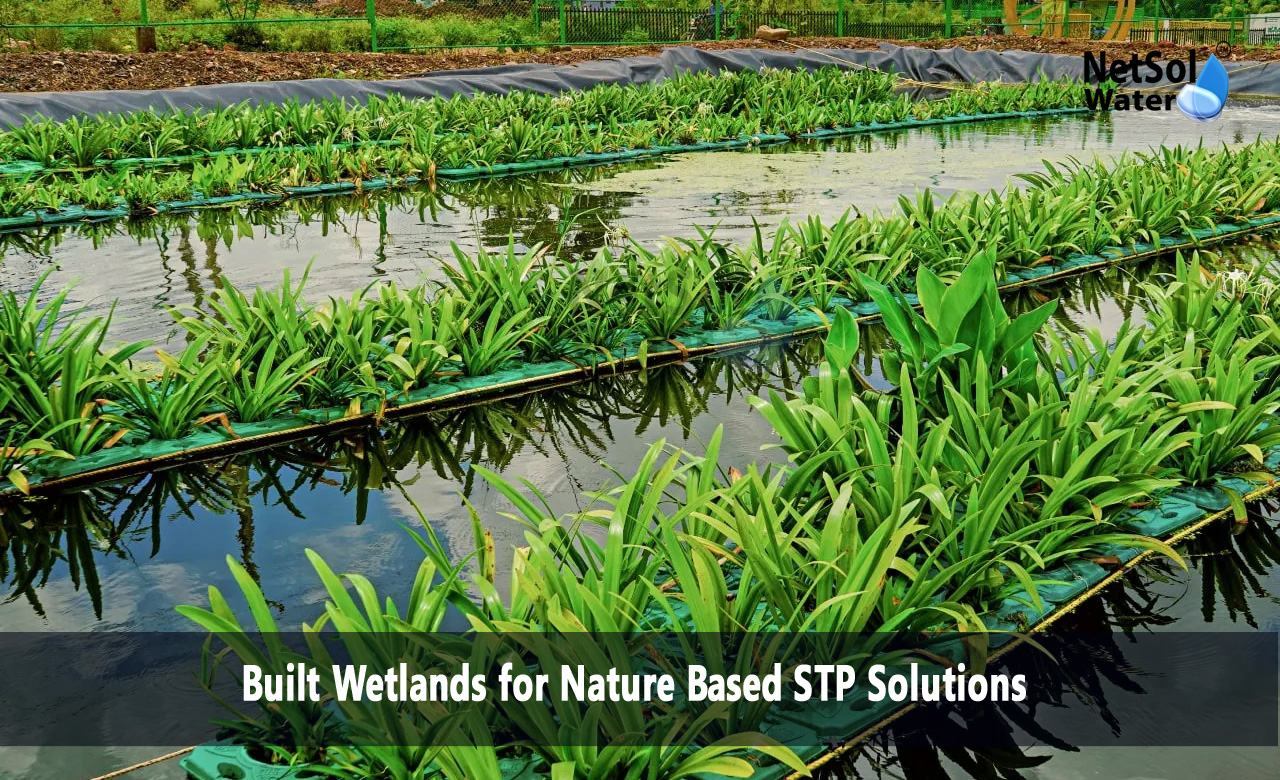Built Wetlands for Nature Based STP Solutions
Built Wetlands for Nature-Based STP Solutions offer a natural way to treat wastewater with low energy use and strong long term gains for the environment. These systems use plants and soil and microbes to clean water in a way that fits well with open spaces and green design. A well planned wetland can remove solids and nutrients and help control odours while it supports local wildlife. This approach works well for small towns for rural communities and for certain urban projects where space allows. Communities can see cost savings over time because these systems need less electric power and work well with low maintenance routines. Planners can design wetlands to match local climate and soil conditions and to meet regulatory needs. Built Wetlands for Nature-Based Sewage Treatment Plant Solutions also create pleasant green areas for education and recreation. They can support biodiversity and help manage storm water at the same time.
Understanding Built Wetlands
Built wetlands matter because they give a simple and effective way to treat wastewater while adding green value to the site. We will look at how these systems function and what makes them work.
What built wetlands are?
A built wetland is a shallow basin that holds water and supports selected wetland plants. The basin contains layers of sand and gravel that guide water through a plant root zone. Microbes that live in the soil break down pollutants. Plants help by taking up some nutrients and by creating a surface for microbes to grow on.
How they work in practice?
Water enters the wetland after basic settling. It moves slowly through the media and the roots. Solids settle to the bottom. Microbial action reduces organic matter and some nutrients. Plant uptake reduces nitrogen and phosphorus. The outflow meets the next step in the treatment chain or it returns to the ground or to a water body if rules allow. Operators watch flow and plant health to keep performance steady.
Design Types and Components
Good design makes built wetlands reliable and long lasting. Here we present main types and key parts so readers can see how to choose and plan.
Surface flow wetlands
Surface flow wetlands let water flow above the media among dense plants. They suit larger land areas and they create a visible wetland that supports birds. These systems need careful control of water depth and strong plant cover to work well.
Subsurface flow wetlands
Subsurface flow wetlands send water below the surface through gravel and sand. They reduce odours and do not expose raw water to wildlife. These systems can fit into smaller footprints and they often suit urban or semi urban sites where surface flow is not ideal.
Key components to consider
A wetland needs an inlet and an outlet and a strong media bed. The bed supports plants and microbes. A liner will prevent unwanted seepage when soils do not suit treatment. Access paths and sampling points help with inspection and routine care. Proper plant selection will match local climate and tolerance to water levels.
Benefits for STP Solutions
Water quality improvements
Built wetlands remove solids and reduce organic load. They help lower nutrient levels and reduce pathogens to some degree. When designed well, these systems improve the clarity and chemistry of treated water so it meets reuse or discharge rules.
Environmental and social gains
Wetlands provide habitat and attract wildlife. They create green spaces that people can visit and learn from. These benefits support public support and can help secure funding for projects.
Energy and cost savings
Wetlands use solar energy and natural processes so they cut electricity needs. They need less complex mechanical equipment and thus lower operating costs over many years. That makes them attractive for decentralized STP setups and for communities aiming to reduce ongoing expense.
Maintenance and Monitoring
Good care keeps wetlands working well. Here we explain the routine needs and monitoring steps that help sustain long term results.
Routine care tasks
Staff will inspect plants and check for blockages at the inlet and outlet. Sediment may need removal after heavy loads. Weeding and replacing plants keeps the bed active. Simple repairs to liners and valves will protect function.
Performance checks
Operators measure flow and basic water quality at regular intervals. They track reductions in solids and nutrients and they note plant health. These checks show when to act and help maintain steady treatment.
Implementation Considerations
This area informs planning choices and helps project teams make decisions that fit local needs.
Site selection and layout
Planners choose sites with suitable slope and space and with safe distance from homes when needed. Soil tests and water table checks guide liner choices and planting plans. Good siting reduces future problems and helps meet permit needs.
Policy and community engagement
Designers work with regulators to meet rules and with neighbours to explain benefits. Early outreach builds trust and helps secure approvals. Education programs can turn a wetland into a community asset.
Scaling and cost planning
Teams will assess land cost and long term operation costs. They will model performance for the expected load. Scaled designs can serve single buildings or whole neighbourhoods. Phased builds help manage funds and allow learning as the project grows.
Conclusion
Built Wetlands for Nature-Based STP Solutions offer a practical and green path for treating wastewater while adding public value and saving energy. These systems bring together simple design and natural processes to deliver reliable performance over time. If you seek help with design or with a feasibility review please get in touch to request a consultation. We can discuss site options and deliver a plan that matches your needs.
Contact Netsol Water at:
Phone: +91-9650608473, Email: enquiry@netsolwater.com



